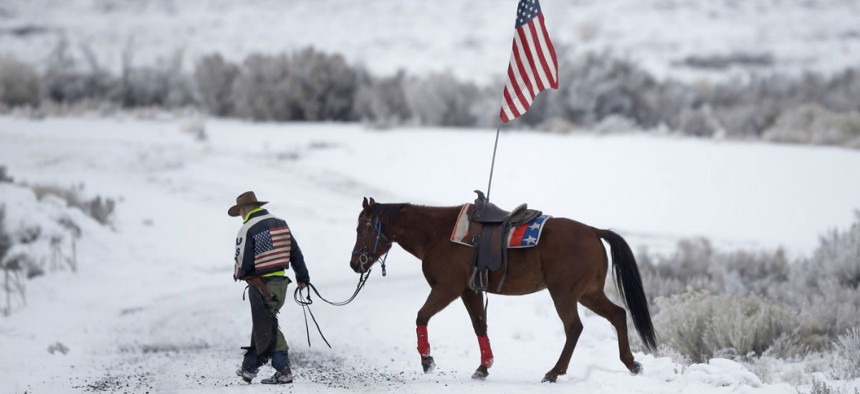Attacks on Feds Spike at Some Agencies
Upticks are occurring at land management agencies, study finds.
Even before an armed militia took control of a federal facility in Oregon earlier this year, attacks on land management employees and other federal workers spiked in 2015, according to a new report.
Threats and assaults jumped primarily at the Bureau of Land Management and the U.S. Forest Service, according to data provided to the nonprofit Public Employees for Environmental Responsibility through the Freedom of Information Act. Incidents involving the National Park Service and National Oceanic and Atmospheric Administration ticked up slightly last year compared to 2014, while confrontations with Fish and Wildlife Service workers dipped slightly and those with U.S. Park Police dropped significantly.
The increase in incidents was concentrated in the western United States, PEER -- an alliance of government officials and environmental advocates -- found. High-profile standoffs in 2014 and 2016, both involving the Bundy family over an opposition to federally controlled lands, occurred in Western states on land maintained by BLM and FWS, respectively.
Assaults on BLM employees nearly doubled to 28 incidents in 2015, while they increased at the Forest Service by 60 percent to 155 instances. PEER, which tracks the data annually, noted the assaults had been trending down but that pattern reversed itself in recent years.

The reported confrontations ranged from physical assault to intimidation to “challenging law enforcement officer’s authority.” Threats included one individual firing a shot into the air and several others who made threatening phone calls.
The totals are likely underreported, according to Jeff Ruch, PEER’s executive director. Ruch noted, for example, NPS only reports assaults against law enforcement officers and not the rest of its workforce. He also said agency employees have told him managers encourage them not to report incidents, which could fan the flames of already tense situations.
After the Oklahoma City bombings, Congress required the Justice Department to track these types of incidents. That law was repealed in 2002, however, after Justice said the data collection was too burdensome.
Ruch said PEER publishes the data to put the information on agencies’ radars.
“Security is a rising concern for scientists and other specialists working in the remote Western outposts,” Ruch said. He added he cannot attribute the uptick to a particular cause, but noted the sentiment toward federal employees in the Western part of the country has not been favorable.
“Local, state and sometimes federal authorities say these employees do not work for a legitimate authority,” Ruch said, musing that “cannot be a bowl of cherries.”
He added agencies should monitor the activities of groups diametrically opposed to a federal presences.
"These right-wing militias constitute a real public safety threat, especially on federal lands in the Sagebrush West,” Ruch said. “By studying the patterns of these events perhaps managers can begin to defuse or prevent confrontations over federal lands.”




